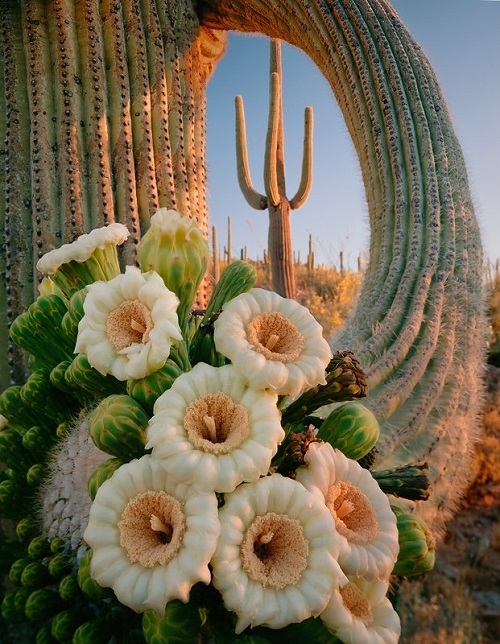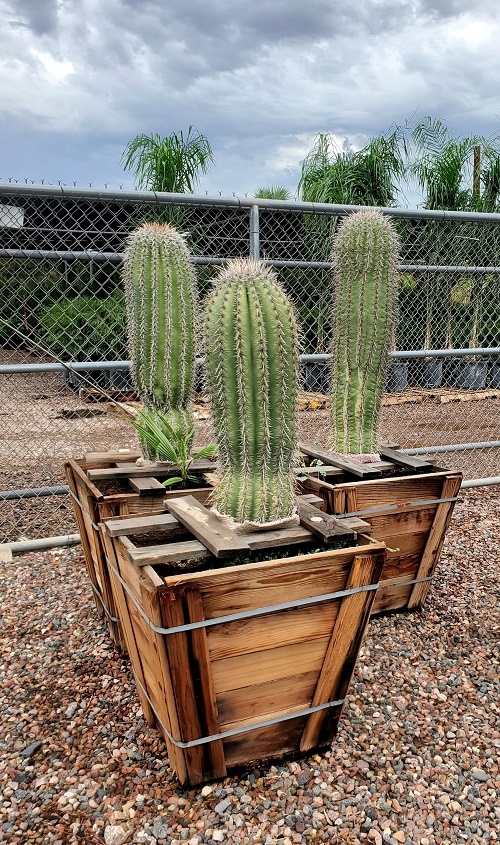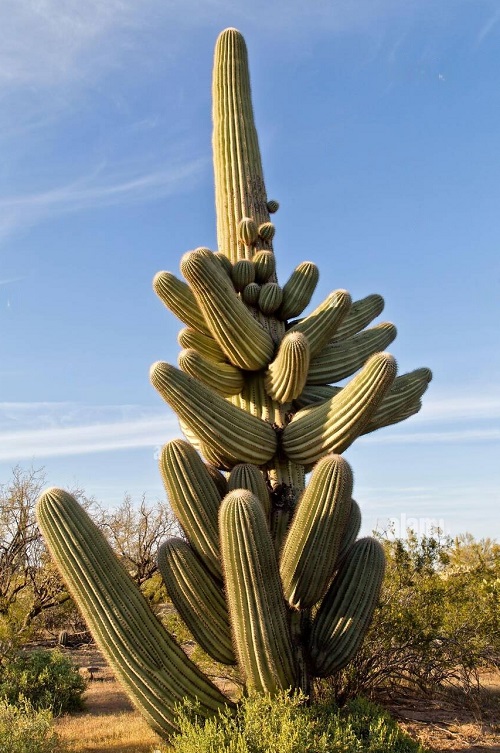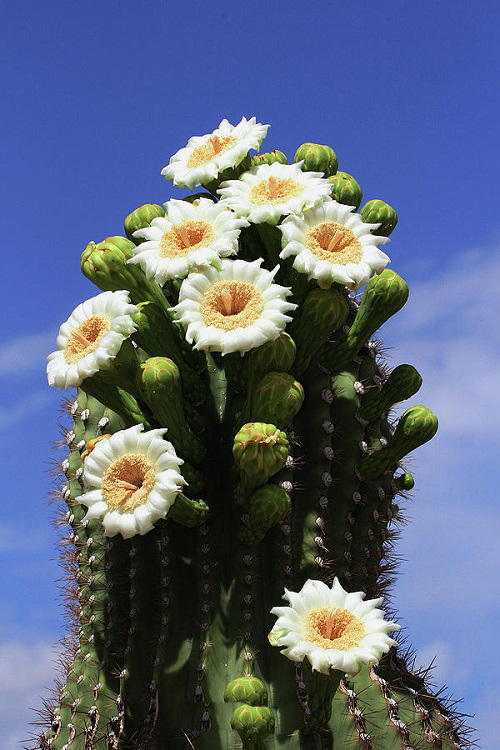Discover the Arizona State Flower and How to Grow It in your garden with expert tips and step-by-step guidance.

Discover the vibrant beauty of the Arizona State Flower and how to grow it with ease. Delve into the unique characteristics of the Saguaro cactus as we share essential tips to help you create a stunning desert landscape in your own backyard.
Texas State Flower and How to Grow It
Arizona State Flower Information
The Arizona State Flower, the Saguaro cactus (Carnegiea gigantea), is an iconic symbol of the desert Southwest, renowned for its towering stature and remarkable adaptability to arid environments.
- Appearance: The Saguaro cactus stands as a majestic sentinel in the desert landscape, often reaching heights of up to 40 feet or more. Its distinct, columnar shape is adorned with arms that may curve upward, like outstretched arms, or remain upright.
- Blooming Season: The Saguaro cactus blooms from late spring to early summer, typically from May to June. The ephemeral flowers, around 3 inches in diameter, open after sunset and close by mid-morning, providing a short-lived yet captivating display of beauty.
- Significance: The Saguaro cactus, as the Arizona State Flower, holds profound ecological significance, acting as a vital hub of sustenance for bats, birds, and insects. Beyond its ecological role, it is a revered cultural emblem.
- Cultural Impact: The Saguaro cactus has become an enduring symbol of the American Southwest, representing resilience, strength, and adaptability. It holds a revered place in Native American cultures and is celebrated as a provider of food, shelter, and spiritual significance.
- Legislation: The Saguaro cactus was designated as the official state flower of Arizona in 1931, a recognition of its vital role in the state’s ecosystem and culture. Its protection is further reinforced by legislation that regulates its harvest and sale, ensuring its preservation for future generations.
- Conservation: Due to its slow growth rate, the Saguaro cactus is vulnerable to habitat loss, climate change, and illegal poaching. Various conservation efforts, including protected areas and public education initiatives, strive to safeguard the Saguaro and its unique desert habitat for the future.
Here are Mind Blowing Saguaro Cactus Facts
How to Grow Arizona State Flower
- Choose a sunny, well-draining location that mimics the arid conditions of the Sonoran Desert.
- Obtain Saguaro cactus seeds from a reputable source.
- Plant the seeds in a container with a well-draining cactus mix during the warmer months.
- Keep the soil lightly moist until germination, which can take several weeks.
- As seedlings grow, provide ample sunlight and gradually decrease watering frequency.
- Transplant seedlings into larger containers or your garden once they’re several inches tall.
- Monitor growth and protect young cacti from frost in colder climates.
Exercise patience, as Saguaro cacti are slow growers, taking years to develop their distinctive form and towering presence.
Best Pot Size for Arizona State Flower
Generally, for younger Saguaro cacti, a pot with a diameter of 6 to 8 inches is suitable. This size allows ample space for the initial growth while preventing excess moisture retention that might lead to root rot.
As the cactus matures, transplanting into larger pots, gradually increasing in diameter to 10 to 12 inches, is advisable.
Here are Plant Pot Sizes from Inches to Gallon
Requirements for Growing Arizona State Flower
Sunlight
- Intensity: Arizona State Flowers thrive in full sunlight, as they are native to the arid landscapes of the Sonoran Desert. Provide at least 6 to 8 hours of direct sunlight daily for optimal growth and health.
- Location: Place the cactus in a south-facing or west-facing location to ensure it receives ample sunlight throughout the day.
Soil
A cactus or succulent mix is ideal, or you can amend regular potting soil with sand or perlite for improved drainage.
- Type: Avoid heavy or clay-like soils, as they can retain excess moisture, leading to root rot.
- pH Level: The pH level of the soil should be slightly acidic to neutral, around 6.0 to 7.0.
Why is My Cactus Turning Yellow? 11 Reasons and Solutions
Water
- Frequency: Saguaro cacti are adapted to arid conditions and require infrequent but deep watering. Allow the soil to dry out completely between waterings.
- Method: Water the soil directly and avoid wetting the Arizona State Flower body to prevent rot. Use a slow and thorough watering method to ensure water reaches the deeper root zone.
Special Considerations: During the growing season (spring to fall), water every 2 to 4 weeks, depending on temperature and humidity levels. Reduce watering frequency in the dormant season (winter).
Temperature
Saguaro cacti are suited for warm and hot climates. They can tolerate temperature fluctuations but prefer mild winters.
- Range: Ideal daytime temperatures range from 70°F to 100°F (21°C to 38°C) during the growing season.
- Protection: Provide protection or move indoors if temperatures drop below freezing, as extended frost exposure can damage the cactus.
Arizona State Flower Care
Fertilizer
The Arizona State Flower is adapted to nutrient-poor desert soils, so it has relatively low fertilizer needs.
Apply a balanced, diluted fertilizer (1/2 of the recommended strength) only during the growing season (spring and summer), approximately every 4 to 6 weeks. Avoid fertilizing during the dormant winter months.
Note: Avoid fertilizers with high nitrogen content, as excessive nitrogen can lead to rapid, weak growth that is more susceptible to pests and disease.
Best Fertilizer For Cactus | How Often to Fertilize Cactus
Pests
- Cactus Weevils: These insects can cause damage by feeding on the cactus, leaving behind unsightly holes and scars.
- Scale Insects: Scale insects can latch onto the cactus and suck out its sap, weakening the plant and causing discoloration.
- Spider Mites: These tiny pests can create webbing on the cactus and cause damage by feeding on its tissues, leading to a weakened appearance.
- Aphids: Aphids can cluster on the cactus, feeding on its juices and potentially transmitting diseases.
- Ants: While ants themselves might not directly harm the cactus, they can protect other pests like aphids and scale insects, allowing these pests to thrive.
- Cactus Borers: These larvae tunnel into the cactus, causing internal damage and weakening the plant’s structure.
Diseases
- Bacterial Soft Rot (Erwinia): Causes water-soaked lesions that turn into soft, foul-smelling decay. Often occurs due to overwatering, especially during cool and damp conditions.
- Fungal Rots (Various species): Different fungi can lead to root rot, stem rot, or crown rot. These infections often thrive in overly wet and poorly drained soil.
- Bacterial Necrosis (Corynebacterium cacticolum): Creates dark, sunken lesions on the cactus, causing tissue decay. This disease can spread quickly and is difficult to control.
- Cochineal Scale (Dactylopius): A specific type of scale insect that can infest Saguaro cacti, leaving white, waxy deposits and weakening the plant.
- Verticillium Wilt (Verticillium): This soil-borne fungus can cause wilting, yellowing, and eventual death of the cactus by clogging its vascular system.
Arizona State Flower – FAQs
1. Can I Grow Arizona State Flower Indoors?
While it’s possible to grow Saguaro cacti indoors, it can be challenging due to their specific light and space requirements. They need intense sunlight and ample room to grow, making them more suited for outdoor landscapes in arid regions.
If you’re determined to try indoor cultivation, provide a bright, sunny window and consider eventual transplanting to an outdoor location as the cactus grows.
2. How Do I Protect My Saguaro Cactus From Pests Naturally?
To naturally deter pests from your Saguaro cactus, consider using neem oil, a natural insecticide. Dilute neem oil with water and spray it on the cactus, focusing on areas where pests are likely to gather.
Additionally, introducing beneficial insects like ladybugs can help control aphids and other harmful pests in your garden.
Check out the 15 Best Large Cactus Plants To Grow Indoors here
3. Can I Plant Arizona State Flower in Colder Climates?
Saguaro cacti are adapted to the warm and arid conditions of the Sonoran Desert. Planting them in colder climates presents significant challenges, as they are not frost-tolerant and require specific temperature ranges to thrive.
If you live in a colder region, consider growing other cold-hardy cactus species that are better suited to your climate or cultivating Saguaro cacti in containers that can be brought indoors during the winter months.




